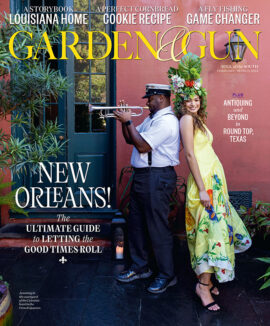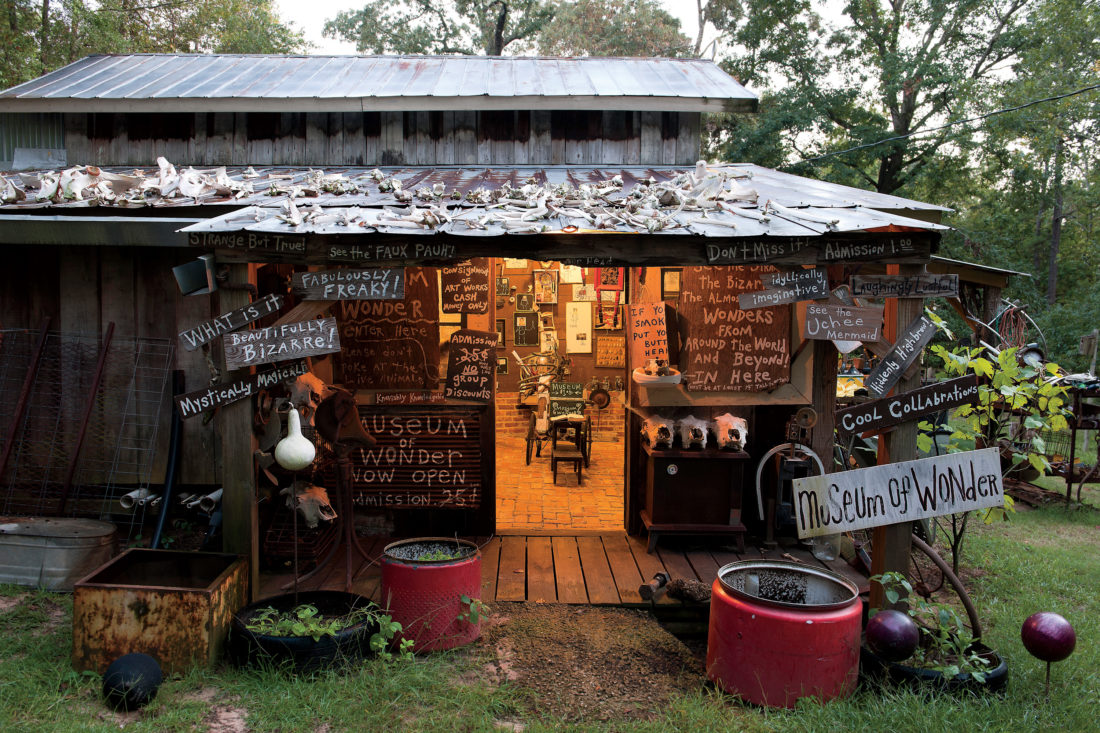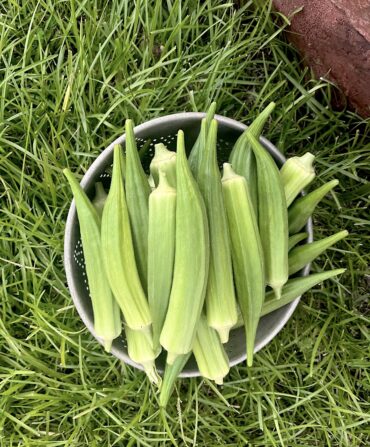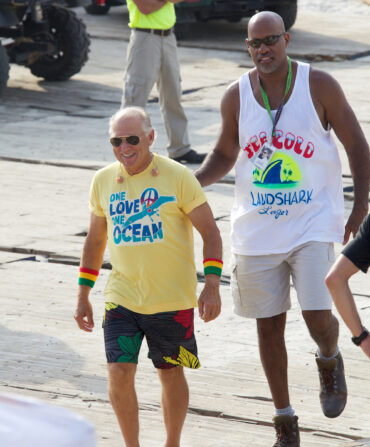The only thing most of us expect to find on our front steps in the morning is a newspaper wrapped in plastic. But for Butch Anthony, it’s not out of the ordinary to wake up and find a box of old license plates, metal box springs, and small animal bones, left for him earlier in the morning by a complete stranger.
Those aren’t some sort of sinister warning from the neighbors. Anthony is the artist and curator behind the Museum of Wonder, a five-hundred-square-foot log cabin in Seale, Alabama, that is filled, top to bottom, with an impressively obscure collection of artifacts, original artwork, and curiosities.
Among the items currently on display: anthropomorphic root vegetables, a sixty-five-million-year-old ammonite (“I found it in a creek near my house”), a collection of Bigfoot tracks, the world’s largest gallstone (a claim made by the doctor Anthony bought it from in Albany, Georgia), and four-foot-tall bowls—or lampshades, if you prefer—that Anthony makes out of wire and cow bones.
The forty-eight-year-old Alabama native started collecting when he was ten years old and has been passionate about found art and objects ever since. “I just can’t quit picking stuff up,” he says. “Every time I go to the dump, I come back with more than I went with. I leave with one truck and come back with two. If I see something that’s cool, I go in for it.”

Photo: Robert Rausch
Anthony in his trademark overalls.
Upon arriving at the museum, you’ll probably first come across Anthony, who is prone to dressing in a steady rotation of Liberty denim overalls and shirts made by his girlfriend, the designer Natalie Chanin. The cabin, which Anthony built when he was fourteen—the same year he found his first dinosaur bone—is adorned with a metal roof and hand-painted signs advising visitors that what they’re about to see inside is “mystically magical,” “idyllically imaginative,” and “beautifully bizarre.”
Photo: Robert Rausch
1 of 3
Photo: Robert Rausch
2 of 3
Photo: Robert Rausch
3 of 3
“It’s like an old town store museum from back in the day,” Anthony says. “There used to be one in every little town around here. You’d pay a dime or a quarter to get in. They’re all gone now, and I’m trying to re-create that. But mine is like P. T. Barnum on crack.”
Inside, Anthony’s own artwork, which includes nineteenth- century portraits that he has painted over with skeletons, hangs high on the walls, overlooking groupings of worn tools, old plastic army men, and loads of small skulls that local hunters and trappers leave in a pile in the woods near Anthony’s house. “They only really want the fur, so they save the bones for me,” Anthony says. “I throw them on the roof so the sun can bleach them white, then bring them back inside for people to buy.” And then there are Anthony’s so-called cabinets of curiosities, original compositions of found material that pay homage to one of his heroes, the late artist and sculptor Joseph Cornell. In one, a young woman in an old photograph looks toward a devilish-looking stuffed bird perched on a short log.
Local artists and artisans have found a home in the museum, as well. James “Buddy” Snipes, a crafter in his sixties who lives down the road, supplies dolls made out of roots and pine knots. To keep the inventory fresh, Anthony sells what he can and uses the money for acquisitions and overhead—a way of operating that is more about spreading his particular found-art gospel than achieving commercial success. “I like other people to have this stuff, so I put it together, sell it cheap, and let it go all over the world,” he says.
In his spare time, Anthony runs the Possum Trot, a barbecue joint–cum–auction house located on his eighty-acre property that is open only on Friday nights. He is also the founder of the Doo-Nanny, an art, music, film, and food festival held annually in March. But it’s the Museum of Wonder, open year-round, that has most expanded his cultural reach. Art enthusiasts, collectors, and curiosity seekers come from all over to see what lies behind the doors of this little old shack. It’s an inventive, out-of-the-box, and fundamentally Southern way of stretching the imagination—which is Anthony’s mission in a fossilized nutshell. “It’s not a touristy-type place,” he says. “But they keep coming here to see stuff made out of nothing.”












